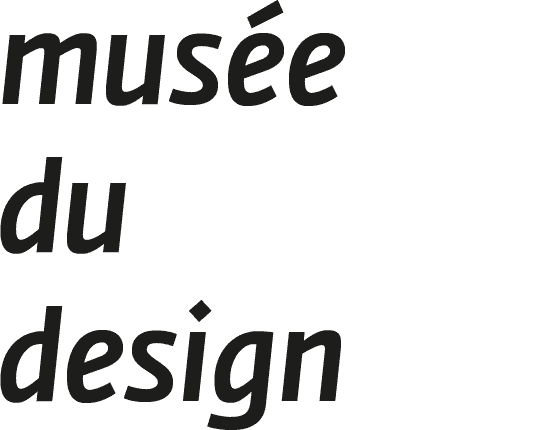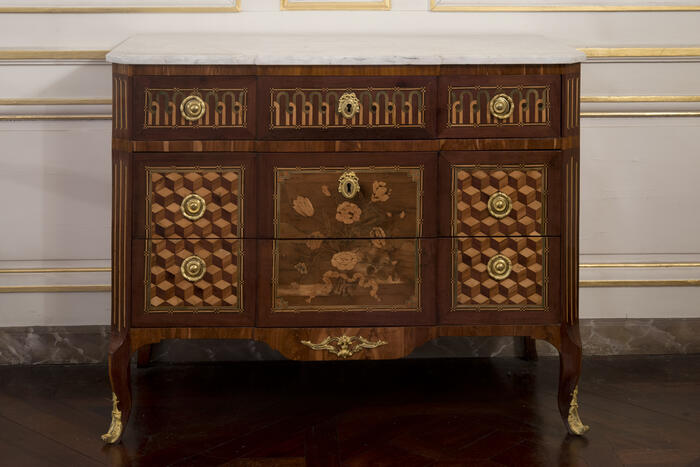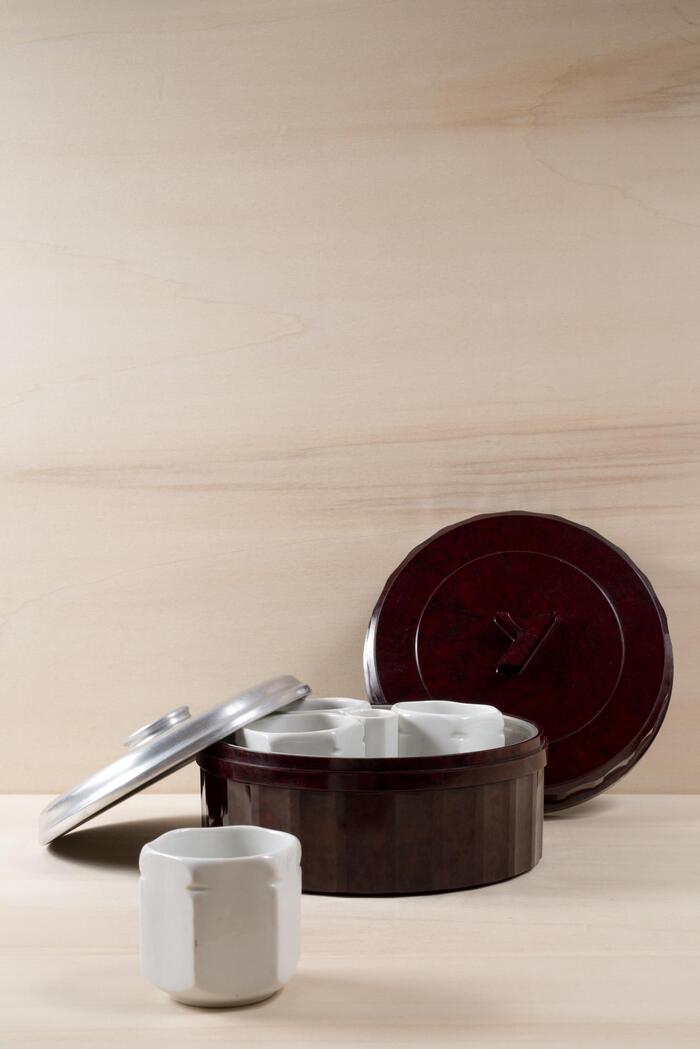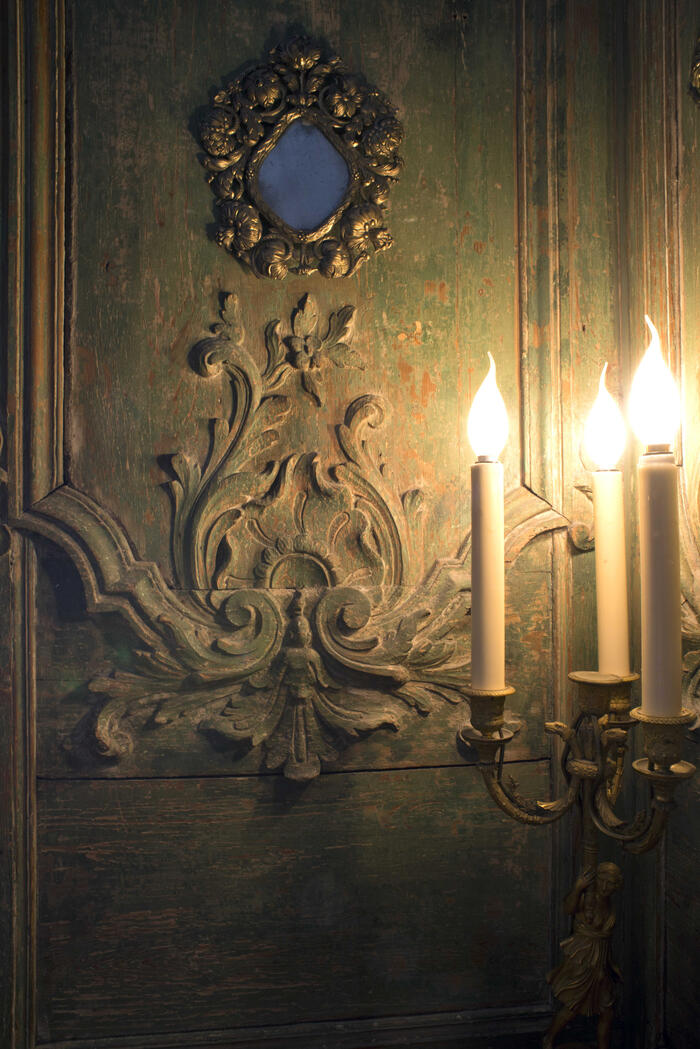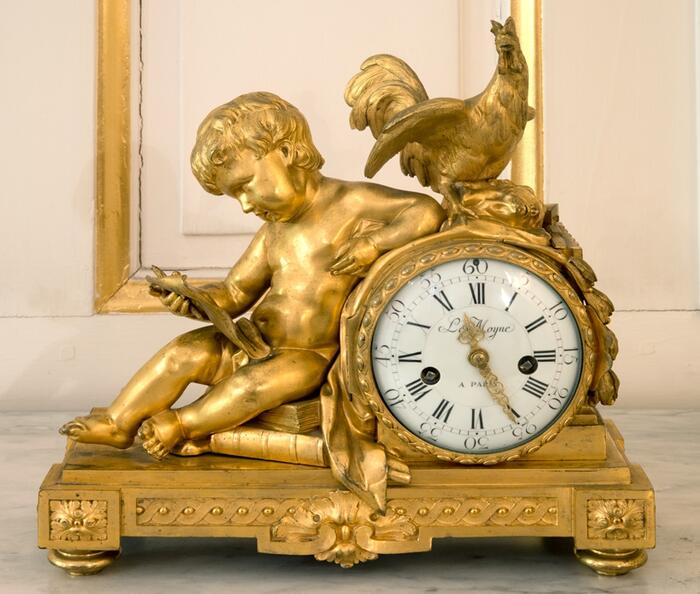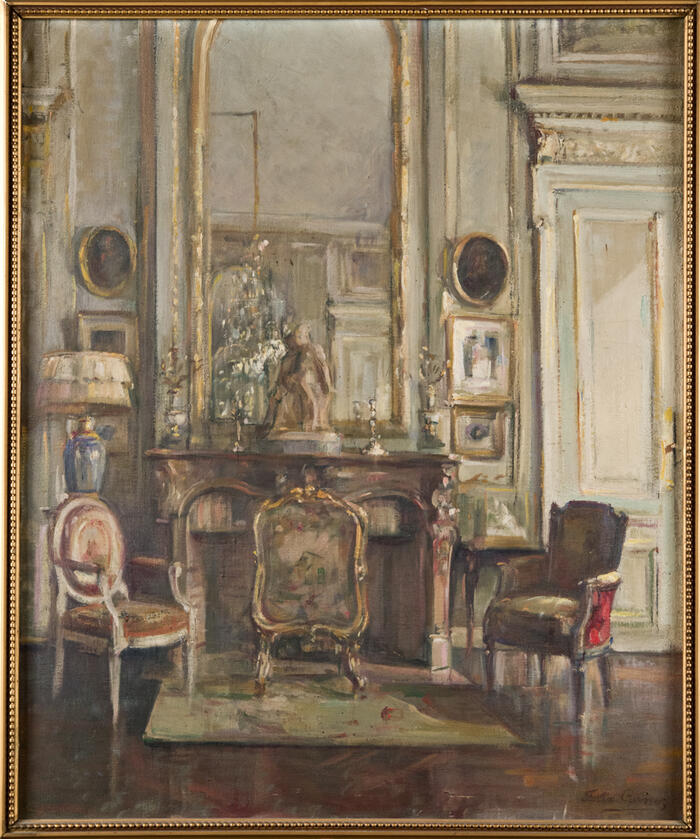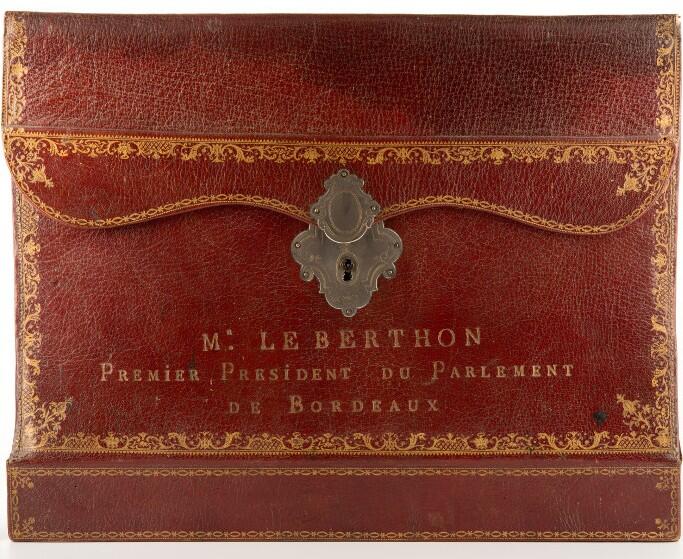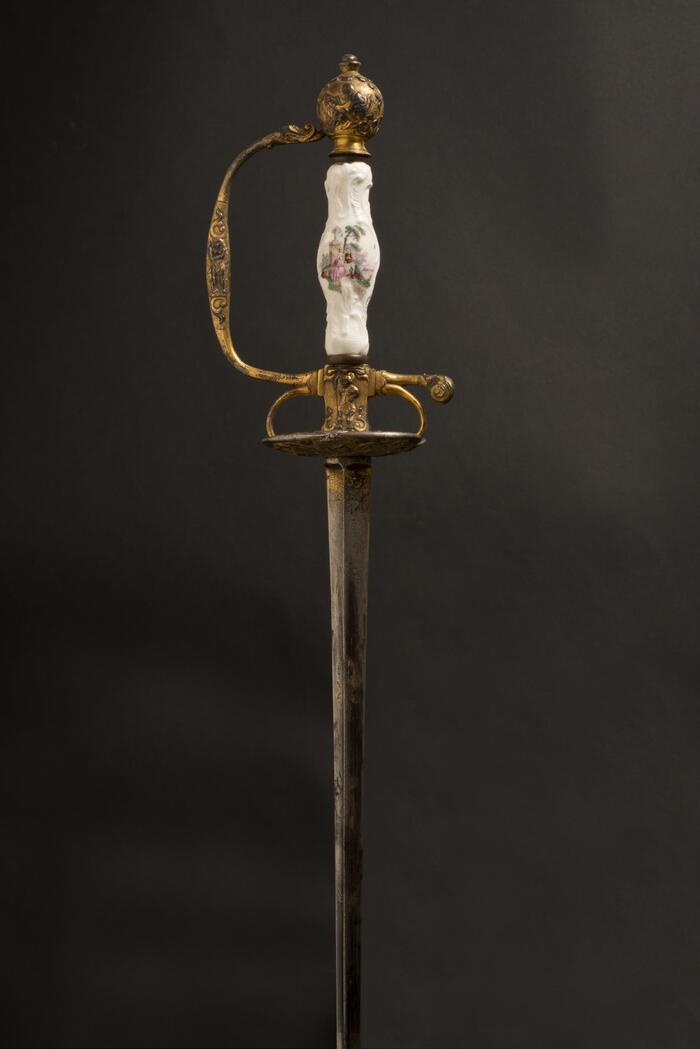Commode-secretary in drawer
The inlaid chest of drawers in the Salon de Compagnie is a fine example of the stylistic transition, which began in the middle of the 18th century, between the supple lines and scrolls of rocaille furniture and the more rigid forms, inspired by Antiquity, which took hold in the last quarter of the century. The cabinetmaker Oeben himself had proposed the principles of this type of furniture for a chest of drawers that he called "à la grecque". A flap used as a secretary, hidden behind the false drawer at the side, makes our chest of drawers exceptional. In addition, its flat surfaces were suitable for a rich marquetry decoration...

